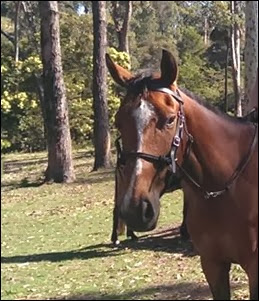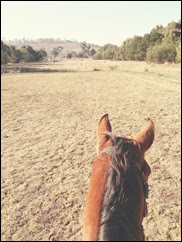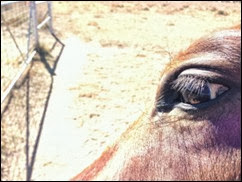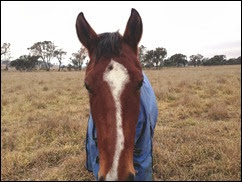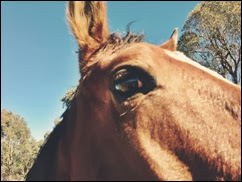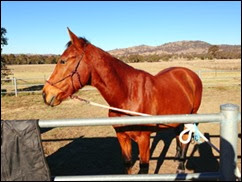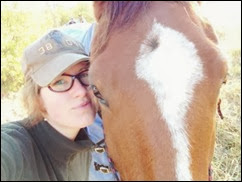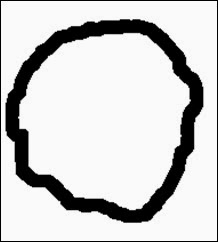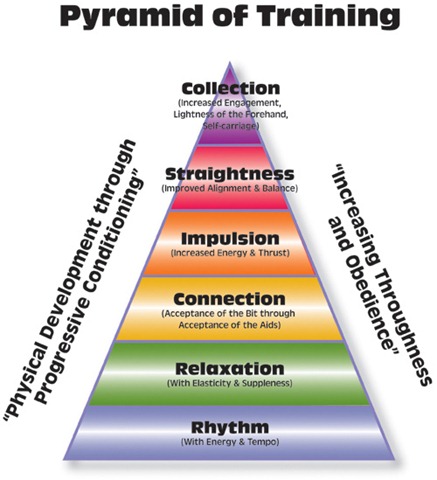To have a horse in your life is a gift. In the matter of a few short years, a horse can teach a young girl courage, if she chooses to grab mane and hang on for dear life. Even the smallest of ponies is mightier than the tallest of girls. To conquer the fear of falling off, having one's toes crushed, or being publicly humiliated at a horse show is an admirable feat for any child. For that, we can be grateful.
Horses teach us responsibility. Unlike a bicycle or a computer, a horse needs regular care and most of it requires that you get dirty and smelly and up off the couch. Choosing to leave your cozy kitchen to break the crust of ice off the water buckets is to choose responsibility. When our horses dip their noses and drink heartily; we know we've made the right
choice.
Learning to care for a horse is both an art and a science. Some are easy keepers, requiring little more than regular turn-out, a flake of hay, and a trough of clean water. Others will test you - you'll struggle to keep them from being too fat or too thin. You'll have their feet shod regularly only to find shoes gone missing. Some are so accident-prone you'll swear they're intentionally finding new ways to injure themselves.
If you weren't raised with horses, you can't know that they have unique personalities. You'd expect this from dogs, but horses? Indeed, there are clever horses, grumpy horses, and even horses with a sense of humor.. Those prone to humor will test you by finding new ways to escape from the barn when you least expect it.
Horses can be timid or brave, lazy or athletic, obstinate or willing. You will hit it off with some horses and others will elude you altogether. There are as many "types" of horses as there are people - which makes the whole partnership thing all the more interesting.
If you've never ridden a horse, you probably assume it's a simple thing you can learn in a weekend. You can, in fact, learn the basics on a Sunday, but to truly ride well takes a lifetime. Working with a living being is far more complex than turning a key in the ignition and putting the car or tractor in "drive."
In addition to listening to your instructor, your horse will have a few things to say to you as well. On a good day, he'll be happy to go along with the program and tolerate your mistakes; on a bad day, you'll swear he's trying to kill you. Perhaps he's naughty or perhaps he' fed up with how slowly you're learning his language. Regardless, the horse will have an opinion. He may choose to challenge you (which can ultimately make you a better rider) or he may carefully carry you over fences - if it suits him. It all depends on the partnership - and partnership is what it's all about.
If you face your fears, swallow your pride, and are willing to work at it, you'll learn lessons in courage, commitment, and compassion in addition to basic survival skills. You'll discover just how hard you're willing to work toward a goal, how little you know, and how much you have to learn.
And, while some people think the horse "does all the work", you'll be challenged physically as well as mentally. Your horse may humble you completely. Or, you may find that sitting on his back is the closest you'll get to heaven.
You can choose to intimidate your horse, but do you really want to? The results may come more quickly, but will your work ever be as graceful as that gained through trust? The best partners choose to listen, as well as to tell. When it works, we experience a sweet sense of accomplishment brought about by smarts, hard work, and mutual understanding between horse and rider. These are the days when you know with absolute certainty that your horse is enjoying his work.
If we make it to adulthood with horses still in our lives, most of us have to squeeze riding into our oversaturated schedules; balancing our need for things equine with those of our households and employers. There is never enough time to ride, or to ride as well as we'd like. Hours in the barn are stolen pleasures.
If it is in your blood to love horses, you share your life with them. Our horses know our secrets; we braid our tears into their manes and whisper our hopes into their ears. A barn is a sanctuary in an unsettled world, a sheltered place where life's true priorities are clear: a warm place to sleep, someone who loves us, and the luxury of regular meals. Some
of us need these reminders.
When you step back, it's not just about horses - it's about love, life, and learning. On any given day, a friend is celebrating the birth of a foal, a blue ribbon, or recovery from an illness. That same day, there is also loss: a broken limb, a case of colic, a decision to sustain a life or end it gently. As horse people, we share the accelerated life cycle of horses: the hurried rush of life, love, loss, and death that caring for these animals brings us. When our partners pass, it is more than a moment of sorrow.
We mark our loss with words of gratitude for the ways our lives have been blessed.. Our memories are of joy, awe, and wonder Absolute union. We honor our horses for their brave hearts, courage, and willingness to give.
To those outside our circle, it must seem strange. To see us in our muddy boots, who would guess such poetry lives in our hearts? We celebrate our companions with praise worthy of heroes. Indeed, horses have the hearts of warriors and often carry us into and out of fields of battle.
Listen to stories of that once-in-a-lifetime horse; of journeys made and challenges met. The best of horses rise to the challenges we set before them, asking little in return.
Those who know them understand how fully a horse can hold a human heart. Together, we share the pain of sudden loss and the lingering taste of long-term illness. We shoulder the burden of deciding when or whether to end the life of a true companion.
In the end, we're not certain if God entrusts us to our horses--or our horses to us. Does it matter? We're grateful God loaned us the horse in the first place.
~ Author Unknown
Found on Amy’s blog Slow and Steady Smiler Wins the Race, it sums my sentiments exactly!
See ya,
bonita
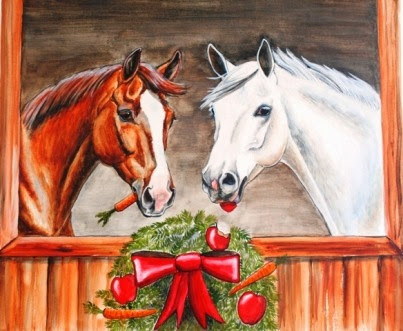







![IMG_4142[1] IMG_4142[1]](http://lh4.ggpht.com/-iCTfif4KFTs/Urk_f7rnmRI/AAAAAAAAHu0/jwXa9Lb5e8g/IMG_4142%25255B1%25255D_thumb%25255B2%25255D.jpg?imgmax=800)
